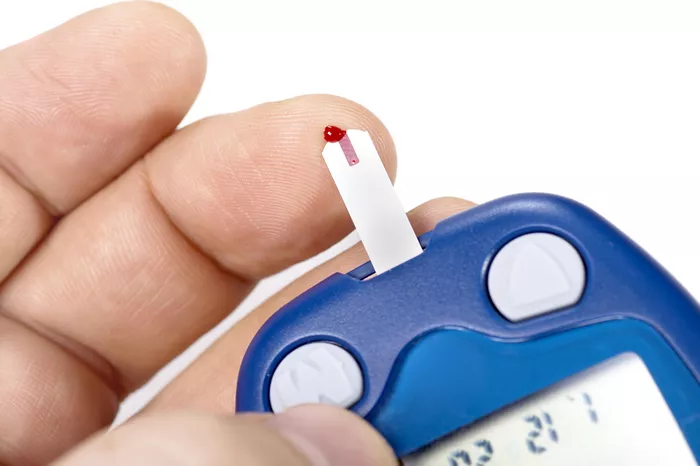Diabetes, a chronic metabolic disorder characterized by elevated blood sugar levels, poses significant health challenges worldwide.
However, the right diet can be a powerful tool in managing and even reversing this condition.
In this comprehensive guide, we explore the principles of the best diet to beat diabetes, offering evidence-based insights, practical strategies, and empowering tips to support individuals in their journey toward optimal health and well-being.
Understanding Diabetes
Before delving into the best diet to beat diabetes, it’s essential to understand the condition itself.
Diabetes is a metabolic disorder characterized by impaired insulin production or utilization, resulting in elevated blood glucose levels.
There are several types of diabetes, including type 1 diabetes, type 2 diabetes, gestational diabetes, and prediabetes, each with its unique underlying mechanisms and management strategies.
While type 1 diabetes is primarily due to autoimmune destruction of insulin-producing beta cells in the pancreas, type 2 diabetes typically involves insulin resistance and relative insulin deficiency.
The Role of Diet in Diabetes Management
Diet plays a central role in diabetes management, influencing blood sugar control, insulin sensitivity, weight management, and overall health outcomes.
By making informed dietary choices and adopting healthy eating habits, individuals with diabetes can optimize their blood sugar levels, reduce the risk of complications, and improve their quality of life.
The best diet to beat diabetes emphasizes nutrient-dense foods, balanced macronutrient intake, portion control, and mindful eating practices, all of which contribute to better glycemic control and metabolic health.
Key Principles
1. Embrace Whole, Unprocessed Foods:
The foundation of the best diet to beat diabetes is built on whole, unprocessed foods that are rich in nutrients and fiber.
Focus on incorporating plenty of fruits, vegetables, whole grains, legumes, nuts, seeds, and lean proteins into your meals and snacks. These foods provide essential vitamins, minerals, antioxidants, and dietary fiber, which support optimal blood sugar control, cardiovascular health, and overall well-being.
2. Prioritize Low Glycemic Index (GI) Foods:
Choose carbohydrates with a low glycemic index (GI) to minimize fluctuations in blood sugar levels and promote sustained energy levels throughout the day.
Low GI foods are digested and absorbed more slowly, resulting in gradual increases in blood glucose levels and reduced insulin demand. Examples of low GI foods include non-starchy vegetables, legumes, whole grains, and most fruits.
3. Moderate Carbohydrate Intake:
While carbohydrates are an essential source of energy, it’s important to moderate carbohydrate intake and distribute them evenly throughout the day to prevent spikes in blood sugar levels.
Aim for a balanced macronutrient distribution that includes carbohydrates, protein, and healthy fats, with an emphasis on high-quality, complex carbohydrates such as whole grains, beans, and vegetables.
4. Limit Added Sugars and Refined Carbohydrates:
Minimize the consumption of added sugars, sugary beverages, refined grains, and processed foods, as these can lead to rapid spikes in blood sugar levels and contribute to insulin resistance.
Instead, opt for natural sweeteners in moderation, such as stevia, monk fruit, or small amounts of honey or maple syrup, and choose whole food sources of carbohydrates whenever possible.
5. Include Lean Proteins and Healthy Fats:
Incorporate lean proteins and healthy fats into your meals to promote satiety, stabilize blood sugar levels, and support metabolic health.
Choose lean sources of protein such as poultry, fish, tofu, tempeh, and legumes, and include healthy fats from sources like avocados, nuts, seeds, olive oil, and fatty fish rich in omega-3 fatty acids.
6. Practice Portion Control and Mindful Eating:
Pay attention to portion sizes and practice mindful eating to avoid overeating and promote better digestion, satisfaction, and awareness of hunger and fullness cues.
Use smaller plates, utensils, and serving sizes to help control portions, and take time to savor and enjoy each bite, focusing on the taste, texture, and aroma of your food.
Evidence-Based Diets for Diabetes Management
Several evidence-based dietary patterns have been shown to be effective in managing diabetes and improving metabolic health. These include:
1. Mediterranean Diet:
The Mediterranean diet emphasizes plant-based foods, healthy fats, lean proteins, and moderate consumption of wine with meals.
Studies have shown that following a Mediterranean-style eating pattern can improve glycemic control, reduce cardiovascular risk factors, and promote weight loss in individuals with diabetes.
2. DASH Diet:
The Dietary Approaches to Stop Hypertension (DASH) diet focuses on increasing intake of fruits, vegetables, whole grains, lean proteins, and low-fat dairy products while reducing sodium intake.
Research has demonstrated that the DASH diet can lower blood pressure, improve insulin sensitivity, and reduce the risk of developing type 2 diabetes.
3. Plant-Based Diet:
Plant-based diets, which emphasize whole, minimally processed plant foods and limit or exclude animal products, have been associated with improved glycemic control, weight loss, and cardiovascular health in individuals with diabetes.
Plant-based eating patterns offer a variety of health benefits, including increased fiber intake, reduced inflammation, and enhanced insulin sensitivity.
Practical Tips for Success
Incorporating the best diet to beat diabetes into your lifestyle requires commitment, planning, and support. Here are some practical tips to help you succeed:
1. Set Realistic Goals:
Start by setting achievable goals for improving your diet and managing your diabetes. Break larger goals into smaller, actionable steps, and celebrate your progress along the way.
2. Plan and Prep Meals:
Take time to plan and prepare balanced meals and snacks ahead of time to ensure that you have nutritious options available when hunger strikes. Stock your kitchen with healthy ingredients, batch cook meals, and portion out servings for easy grab-and-go options.
3. Stay Hydrated:
Drink plenty of water throughout the day to stay hydrated and support optimal metabolic function. Limit sugary beverages, caffeinated drinks, and alcohol, as these can contribute to dehydration and blood sugar fluctuations.
4. Stay Active:
Incorporate regular physical activity into your routine to improve insulin sensitivity, promote weight loss, and enhance overall health. Aim for a combination of aerobic exercise, strength training, and flexibility exercises to reap the full benefits of physical activity.
5. Monitor Blood Sugar Levels:
Keep track of your blood sugar levels regularly using a blood glucose meter or continuous glucose monitoring (CGM) system. Monitoring your blood sugar levels can help you identify patterns, track the impact of dietary changes, and make informed adjustments to your diabetes management plan.
Conclusion
In conclusion, adopting the best diet to beat diabetes can be a transformative step toward better health, improved blood sugar control, and enhanced quality of life.
By embracing whole, nutrient-dense foods, prioritizing low GI carbohydrates, and practicing portion control and mindful eating, individuals with diabetes can optimize their metabolic health and reduce the risk of complications associated with the condition.
With the support of evidence-based dietary patterns, practical strategies, and a commitment to lifelong wellness, it’s possible to beat diabetes and thrive with vitality and resilience.

























